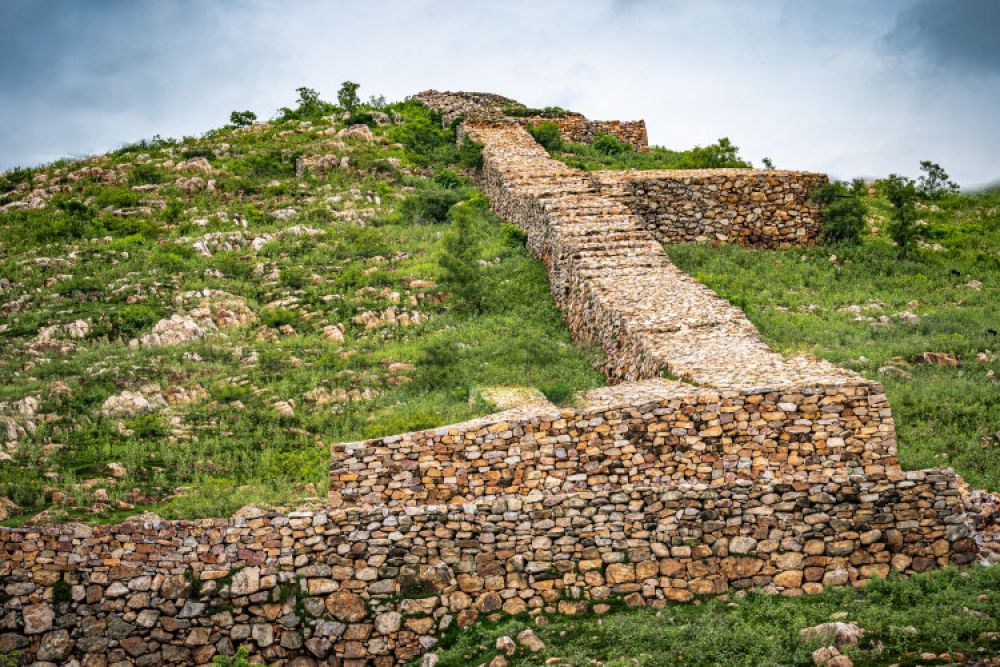

Rajgir, a historic city in the northeastern Indian state of Bihar, is known for its rich cultural heritage and spiritual legacy. It was the first capital of the ancient kingdom of Magadha, a state that would eventually evolve into the Mauryan Empire. One of the most significant historical sites in Rajgir is the Cyclopean Walls, which encircle the old city and are believed to have been constructed during the pre-Mauryan times, making them over 2500 years old.
The name 'Cyclopean' comes from the walls' massive, uncut stone blocks, which are reminiscent of the Cyclopean masonry of the Mycenaean civilization in Greece. The technique involves stacking huge stones without the use of mortar. The walls run for approximately 40 kilometers, though only sections remain today. They once served as fortifications for the city and are an impressive testament to the engineering skills of ancient times. Historians and archaeologists regard the Rajgir Cyclopean Walls as one of the oldest examples of ancient defensive structures in India.
Tourism in Rajgir has been historically linked to its spiritual and historical significance. Attractions like the Cyclopean Walls have always been a point of intrigue for history buffs, archaeologists, and tourists alike. The city is also revered in Buddhism and Jainism, having hosted Buddha and Mahavira respectively. This has made it a pilgrimage site and has continually drawn visitors even before the concept of tourism as we know it was popularized.
While the walls themselves are a marvel, the area around Rajgir is studded with other historical sites, including Buddhist monasteries and Hindu temples, adding to the destination's allure. Cable Car rides offering panoramic views, hot springs known for their medicinal properties, and natural beauty make Rajgir a well-rounded tourist destination.
Rajgir is evolving with the broader tourism trends in India, which emphasize sustainable and experiential travel. Visitors are increasingly interested in the stories, traditions, and cultural significance behind historical sites like the Cyclopean Walls. The Bihar government and tourism department have been investing in improving infrastructure, promoting eco-tourism, and providing better facilities for visitors. This includes the recent development of the Rajgir Nature Safari Park nearby and attempts to integrate more local experiences such as village tours and traditional Bihari cuisine into the tourism offerings.
Recognizing the importance of conserving this historical site, preservation efforts have been undertaken. The Archaeological Survey of India (ASI) and other local bodies are tasked with maintaining and protecting these ancient structures. Tourists are encouraged to respect the historical significance of the Cyclopean Walls while enjoying their visit.
Festivals like the Rajgir Mahotsav (Rajgir Festival) add to the cultural tapestry of the area, showcasing traditional dance, music, and arts, prompting an uptick in tourist footfall during such events. With the growing emphasis on heritage tourism, the Cyclopean Walls are set to remain a cornerstone attraction in Rajgir, inviting travelers to this region to immerse themselves in its profound historical patrimony.